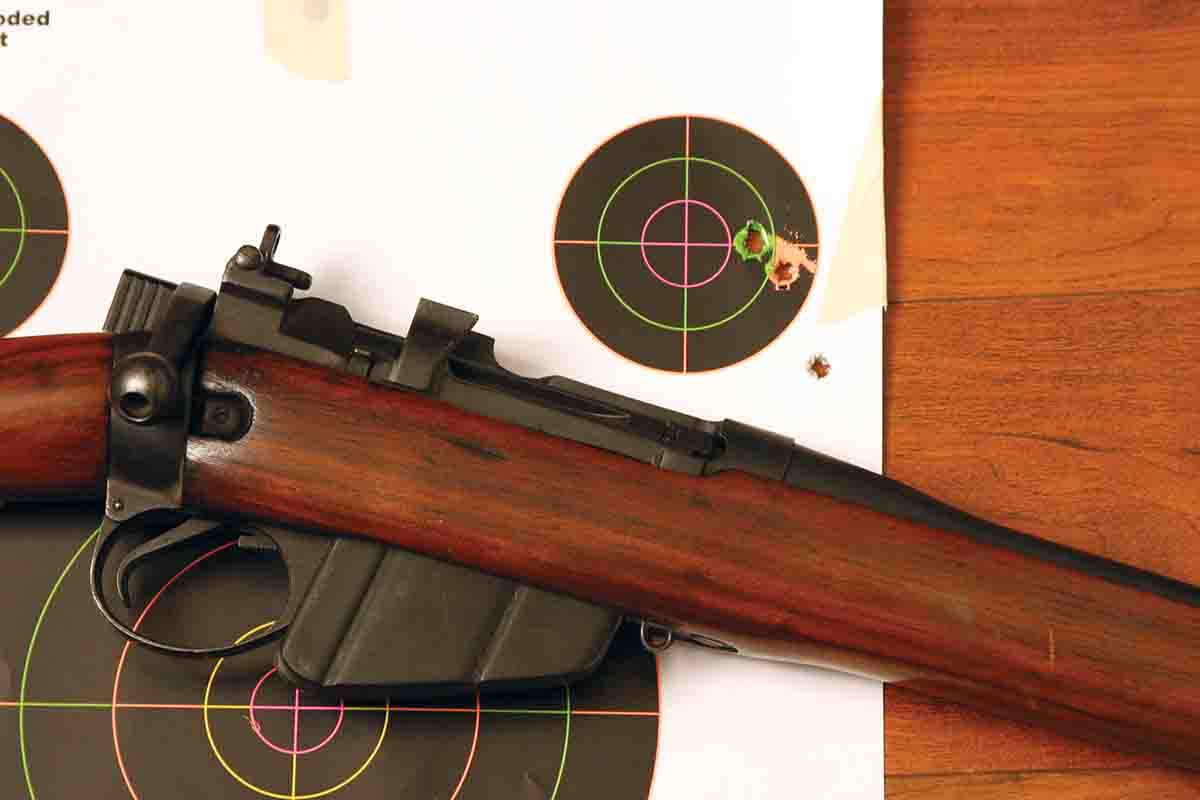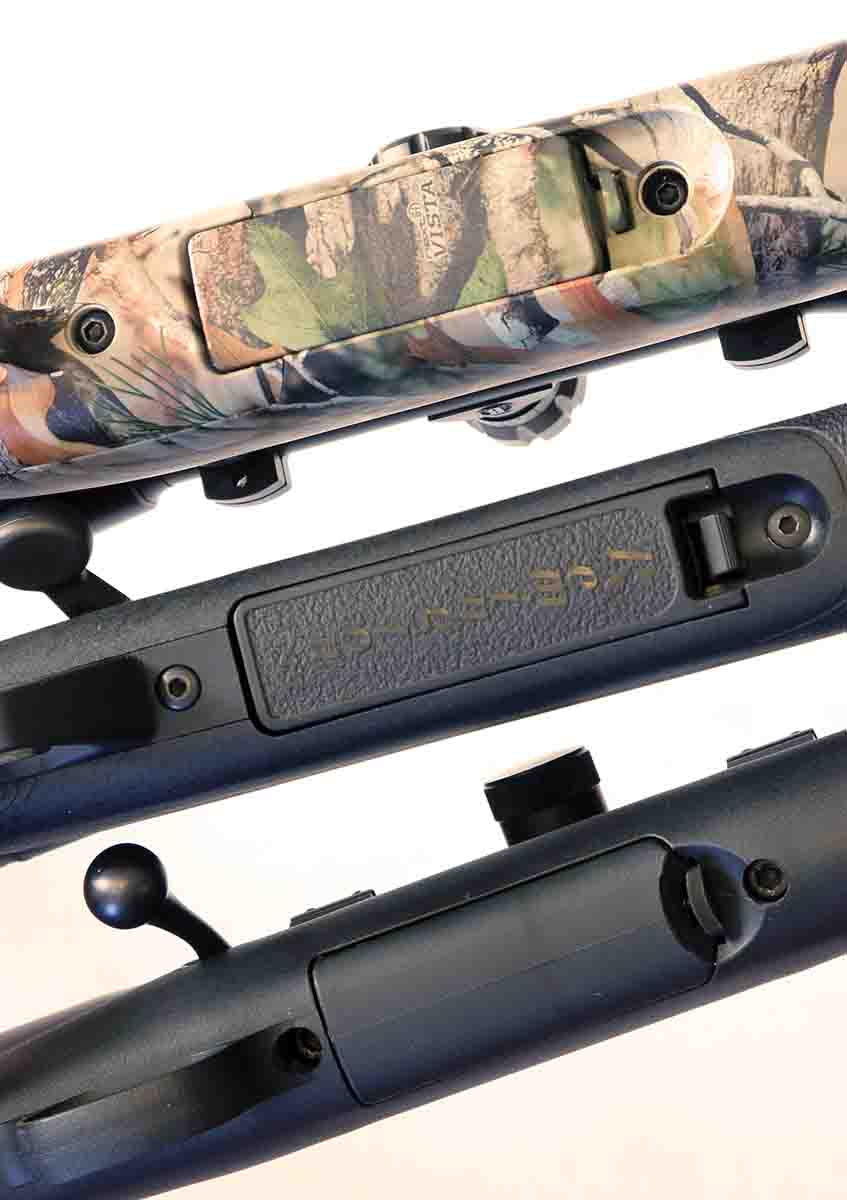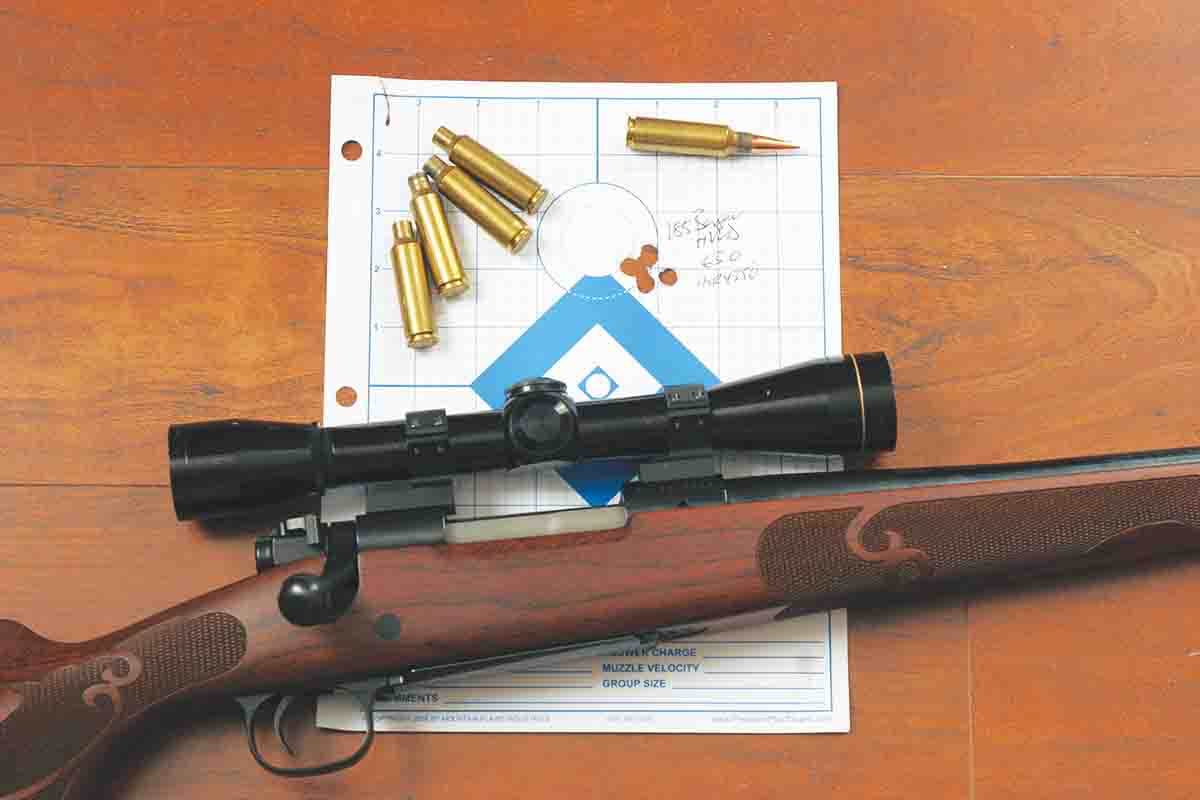Repeating Rifle Magazines
How They Feed Can Be Critical
feature By: John Barsness | July, 21


The best-known early American repeating rifles were lever actions, the Spencer and Henry. Both appeared just before the War Between the States, and some of each were used by the Union Army, though a few eventually fell into Confederate hands.
The Spencer was designed and manufactured by Connecticut inventor Christopher Spencer (who, among other things, developed the first automatic turret lathe). It featured a tube magazine inside the buttstock, capable of holding seven .56-caliber rimfire cartridges, but working the lever did not cock the hammer.

The Henry was invented by Benjamin Henry, who was born in Vermont but ended up in Connecticut, then the heart of America’s firearms industry, where he established the New Haven Arms Company. Working the Henry’s lever also cocked the hammer, and the tube magazine under the barrel held over twice as many .44 rimfire rounds as the Spencer’s buttstock tube.
Both provided considerably more firepower than the caplock muzzleloaders carried by most soldiers on either side of the conflict, but not many used the lever actions, because so many muzzleloaders already existed. Still, the Spencer Rifle Company delivered almost 100,000 to the U.S. military by the end of the war. Far fewer Henrys appeared, because they couldn’t be manufactured as quickly as the simpler Spencers – but they left a vast impression on Confederate soldiers, who famously called the Henry “that damned Yankee rifle you load on Sunday and shoot all week.”
However, the Henry’s high-capacity tube magazine ended its military career. It had to be refilled from the front end, and the design required a lengthwise slot in the tube, allowing moisture, dirt and debris to enter. In 1866, Oliver Winchester, the majority stockholder in the New Haven Arms Company, renamed it Winchester Repeating Arms and introduced an improved lever-action designed by Benjamin Henry.

The major improvement was a spring-loaded “gate” on the right-hand side of the action, allowing cartridges to be inserted directly into the rear of the magazine tube. This made refilling the magazine much easier, and the rifle could be held pointed forward while reloading in case a soldier or hunter needed to shoot again. The Winchester Model 66 remained in production until 1899, and established the tube-magazine loading gate that most centerfire Winchester lever-actions have featured for more than 150 years – along with Marlin and other brands, including today’s Henry Repeating Arms.

While many modern rifles still use tube magazines, after smokeless rifle powder appeared in the 1880s, other advances resulted in a magazine holding cartridges next to each other instead of end-to-end. One major reason arrived with pointed “spitzer” bullets in the late 1880s. Spitzers are far more ballistically efficient than roundnose or flatnose bullets, but during recoil the pointed tips could set off cartridges in tube magazines.

One tube-magazine design got around this in the Model 14/141 Remington pump, by using a spiraled tube that angled the cartridges so spitzers didn’t press against the primers of rounds ahead of them. This worked, but was trickier to manufacture than a plain tube.
Magazines holding cartridges next to each other were usually not only cheaper to produce, but more rugged than barrel-mounted tube magazines, because the magazine is at least partly protected by the stock. Exposed tube magazines can be dented enough to interfere with cartridge feeding, as Eileen discovered back when we purchased our first house in 1990.
It was an old ranch house on seven country acres, and Eileen’s upstairs office overlooked the garden, where Richardson’s ground squirrels sometimes helped themselves to our crops. She had a typical office chair on wheels, and her desk sat next to the window overlooking the garden. She kept my Marlin 81 leaning against the window end of the desk, and while tapping away on her computer, occasionally looked out the window. When a “gopher” appeared, she rolled her chair over to the window and opened it, then rested the rifle on the window sill. This worked fine until one day when the old window refused to stay open, slamming down on the Marlin’s barrel and crunching the magazine tube.

Box magazines appear in a wide array of configurations, including a single row of cartridges, and box magazines where two rows of cartridges are “staggered” beside each other, allowing more to fit in a shorter magazine. There are also rotary magazines, used in Mannlicher-Schöenauers and pre-1960 Savage 99s. Ruger offers a bunch of rimfire rifles using the detachable, rotary 10/22 magazine (so named because it holds 10 rounds), and five-round detachable magazines for Ruger American centerfires (RAR).
I have found the RAR rotary magazine works most reliably with cartridges featuring relatively straight bodies. My 1:8 twist .22-250, part of a special run from Whittaker Guns in Kentucky, is very accurate, one reason I used it to take my last pronghorn buck, but the tapered .22-250 case sometimes turns a little sideways in the magazine, causing a minor jam. (I have always found it somewhat odd that the two most popular high-velocity .22 centerfire cartridges in the U.S., the .22-250 and .220 Swift, have tapered cases – and the Swift even has a “semi-rim.” They feed fine from most magazines, but both have also caused jams in a few of my rifles.)

Perhaps the most reliable are single-row magazines, because the top cartridge lines up more directly with the chamber, a good example being AR-15 magazines. I have several brands of AR-15 magazines, both metal and plastic, and so far, they have all worked very well in several rifles, with rounds from the .223/5.56 to Bill Wilson’s excellent feral-pig exterminator, the .300 HAM’R.
However, single-stack magazines must be relatively tall to hold many rounds. Bench-shooting an AR-15 with a magazine holding more than 10 rounds often results in the bottom of the magazine hitting the top of the bench.
Higher-capacity magazines also encourage many of us to expend more ammunition, just as old-time military officers suspected. About 15 years ago, I was invited on a prairie dog shoot by a major firearms and ammunition company, which had just introduced its first AR-15s. The company folks who ran the shoot only brought five-round magazines, because they’d already discovered bigger magazines tended to result in far more repeat shots when the first shot missed. I primarily use my AR-15 for varmint hunting and even with my very “affordable” handloads find it too easy to instantly torch off another load after missing a prairie dog, whether to correct my wind-hold, or just because.
Single-stack magazines are almost all detachable, and detachable magazines can be lost, transforming a repeating rifle into a single shot – and a relatively clumsy one, because if you fail to slide a round directly into the chamber, it can easily fall to the ground through the magazine hole. Some detachable magazines, believe it or not, also have exposed release levers. One on a “supposed” hunting rifle I reviewed had the lever hanging over half an inch below the magazine, where it could easily bump into common pieces of nature.

Many hunters don’t like magazines hanging below the stock in front of the trigger guard – the balance point of many rifles. A gun writer named Jack O’Connor once pointed out that rifles are relatively clumsy objects to tote around, one reason we fit them with slings. Traditional lever-action rifles with tube magazines remain popular partly because they can be easily carried with one hand wrapped around the relatively slim action (unless, of course, a scope is mounted on the action).
This is also why many hunters prefer a staggered-round magazine, which holds sufficient ammunition yet doesn’t protrude below the action. These mostly appear on bolt actions, though quite a few pumps and even lever actions feature staggered-round magazines, where they can enhance accuracy.
The traditional lever action tube magazine can cause problems due to being connected to the barrel, where like a poorly inletted forend on a bolt rifle, it can interfere with barrel vibrations. I’ve owned at least a dozen centerfire tube-magazine lever rifles in chamberings from .25-20 WCF to .45-70 Springfield, and while most shot well enough for most hunting, some needed the magazine tube to be pressure-relieved to shoot accurately enough even for woods hunting. The most notable was a Browning reproduction of the Model 71 Winchester in .348 WCF, which sometimes grouped three shots in 4 or 5 inches at 100 yards before I worked over the magazine’s “bedding.”
My two most accurate lever-action centerfires both had action-enclosed magazines, and grouped as well as accurate bolt rifles.
One was a Browning Lever Rifle .30-06, which normally grouped five shots (not just three) in an inch at 100 yards. The other was a Savage 99EG in .300 Savage, which shot three-round cloverleaves not only with handloads, but with Federal 180-grain factory ammunition.
Despite their virtues, staggered-round magazines can have their problems, most often in controlled-feed actions. To a considerable extent, controlled-round-feed (CRF) magazine boxes, feed rails and even loading ramps need to be dimensioned around particular cases in order to feed slickly.
Back when every other American hunting rifle tended to be an ex-military rifle, some people were astounded to find that rebarreling a typical 8x57 K98 Mauser to .308 Winchester resulted in definite “feeding problems.” The only fix was to carefully file the integral feed rails to accommodate the slightly different shape of the .308 case, and often required a block inside the rear of the magazine box for the shorter .308.

Such problems were not confined to remodeled military rifles. When “short” bolt actions started appearing after World War II, starting with the Remington 722, some rifle loonies designed magnum cartridges to fit the 2.85-inch magazine. These fed well in the push-feed 722 action (which eventually became the short Remington 700 action), and in the 600 action used for the first commercial short/fat magnums, the 6.5 and .350 Remingtons, but in 1990, Winchester started producing a semi-remake of the pre-64 CRF action – and more hunters started craving controlled-feed actions.
When Winchester first introduced its WSM cartridges in 2001, the thick, beltless cases often didn’t feed very well in the short Model 70 CRF action – though the problem was quickly corrected. This occurred because the long Mauser-type extractor held the case-rim firmly against the bolt face, but the cartridge tips upward slightly as it leaves the magazine and the bullet enters the feed ramp – and the short magazine box required the fat cases to tilt upward considerably.
Standard 98 or 1903 Springfield actions were long enough to slickly feed typical Mauser rounds such as the 7x57 and 8x57, along with any other cartridges more or less based on those rounds, such as the .30-06. Longer-magazine CRF actions, such as pre-64 Model 70 Winchesters chambered the .375 H&H Magnum, allowed the fatter (but longer) cartridge to tilt upward at relatively low angle.
One of the biggest problem child CRF rifles I have ever owned was a short-action Ruger 77 Mark II in .350 Remington Magnum. I bought the rifle slightly used in 2009, and soon found out why it was only slightly used: It rarely fed rounds correctly, and even when they did make it to the chamber, I had to push the bolt handle hard. The problem was exacerbated by the relatively large-diameter bullet, which tilted the cartridge even more as it entered the feed ramp. Thanks to Jerry Kuhnhausen’s book on remodeling Mauser military actions, I had become pretty good at adjusting CRF rails and feed ramps, but it took most of a day to get the Mark II to function reliably.
A year later, I acquired a Remington 700 Classic in .350 Remington, which fed perfectly due to lacking a Mauser-type extractor, allowing the cartridge to easily tilt upward into the chamber. When gunsmith Charlie Sisk and I decided to invent a wildcat, we eventually came up with the .350 case necked up to 9.3mm – partly because Charlie had discovered the short, belted Remington case fed very slickly through actions designed for Remington Short-Action Ultra Magnums or Winchester Short Magnums (WSM).
Charlie built his personal 9.3 Barsness-Sisk (B-S for short) on a WSM Model 70 action, but I had him make mine on a Remington 700 action, originally barreled for the 7mm SAUM. It fed great – including during three very quick shots I fired at an Alaskan grizzly. While many hunters think it’s crazy to hunt dangerous game with a push-feed rifle, the grizzly died and I did not.
Many magazine designs appeared during the early years of smokeless powder rifles and some were pretty odd, such as the open-bottomed, clip-fed, single-stack magazine on the 6mm Lee-Navy rifle, which like the slotted Henry tube-magazine tended to gather stuff inside. On the other hand, my favorite “obsolete” rifle magazine is the Krag-Jorgenson. I’ve owned both American and Norwegian Krags, and always love to throw a cartridge into the side magazine, close the lid and see the cartridge instantly appear along the left feed rail, ready to flow smoothly into the chamber.


